Mapped: How Europe’s Population Has Changed
Between 1990 and 2023, the world population grew by more than 50%. But not all countries grew at the same rate, and some in fact, some didn’t grow at all.
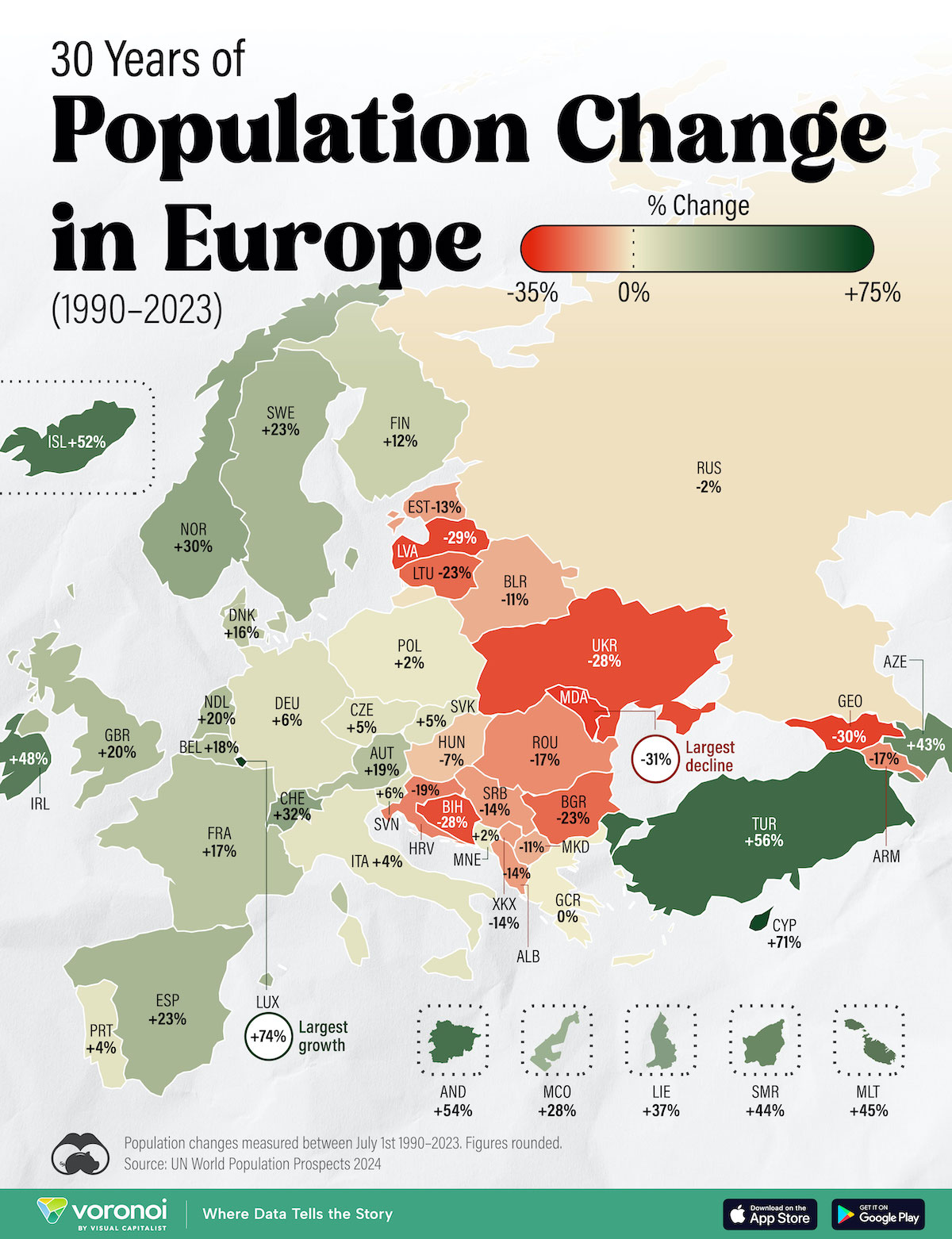
Europe’s Population Changes Since 1990
Between 1990 and 2023, the world population grew by more than 50%. But not all countries grew at the same rate, and some in fact, some didn’t grow at all.
We map Europe’s population changes, color-coded by growth (green) and declines (red) in the same time period. Data is sourced from the UN’s World Population Prospects 2024.
Population Growth Division Across Western and Eastern Europe
Western European countries have seen significant population growth, even as birth rates have fallen, indicating migration into the region.
Türkiye (+56%) and Ireland (+48%) have registered the most growth for countries with more than 1 million people.
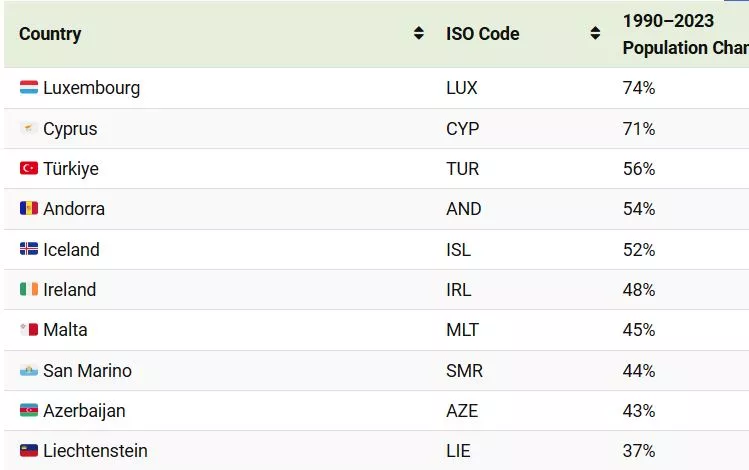
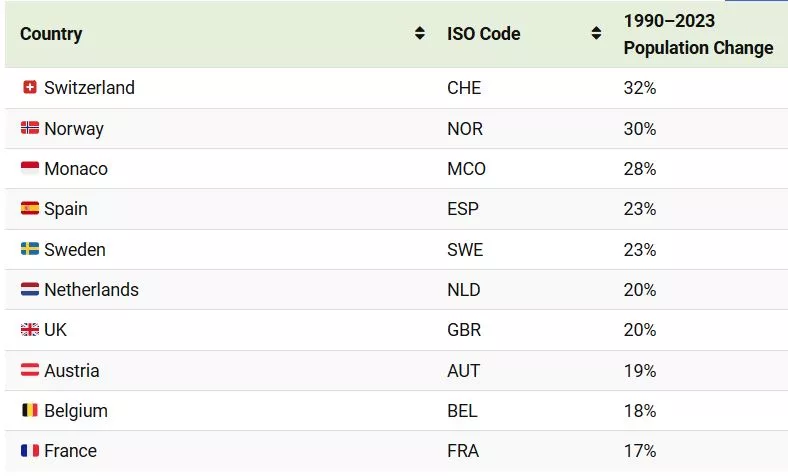
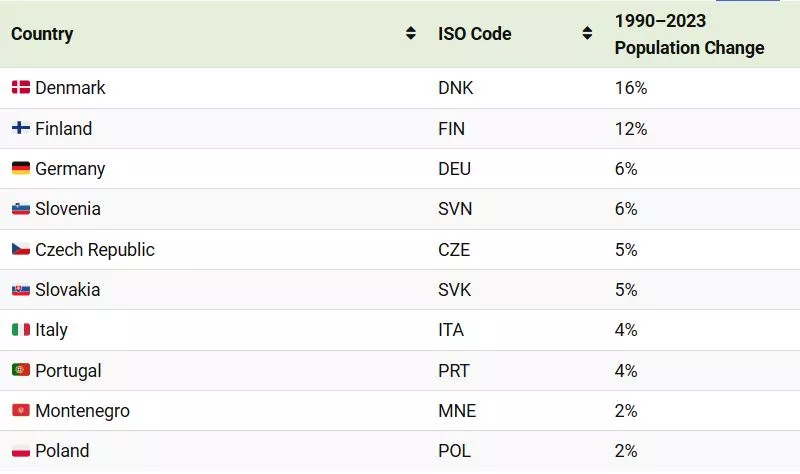
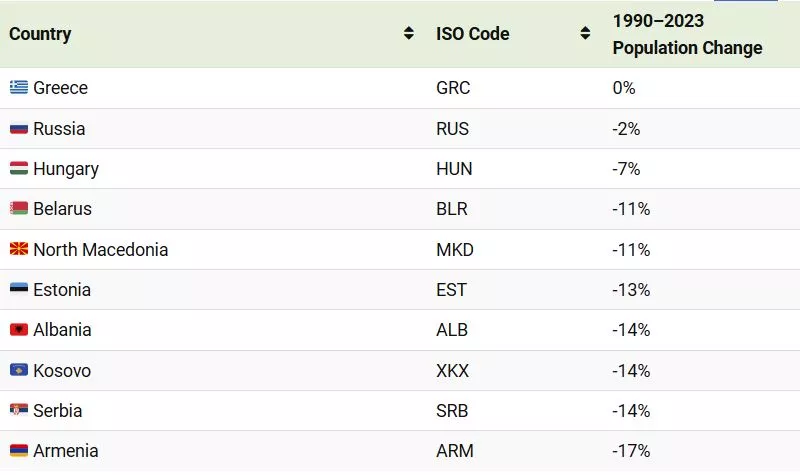
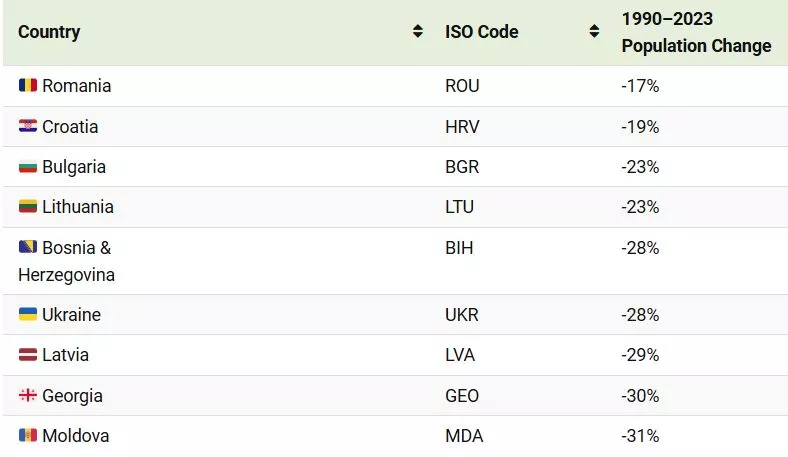
Note: Population changes measured between July 1st 1990–2023. Figures rounded.
On the other hand, Russia and several former Soviet bloc countries have fewer people now than they did in 1990, when the Berlin Wall fell.
The Balkan countries have also seen population declines, after waves of emigration following the Yugoslav Wars.
The IMF estimates nearly 25 million Eastern Europeans left between 1990 and 2015, more than the combined population of the Czech Republic and Hungary. Their analysis found that countries with a less effective rule of law and weaker institutions saw the highest emigration rates, usually amongst the educated and skilled workers.
And though emigrants send remittances home, the money received from abroad is a double-edged sword. The IMF says that while investment and consumption have increased in Eastern Europe, currencies have also appreciated, reducing the competitiveness of exports.
More By This Author:
Mapped: The World’s Largest Stock Markets (1900 Vs. 2023)Charted: U.S. National Debt Reaches $35 Trillion
Charted: The Countries Using The Most Energy Per Capita
Disclosure: None



